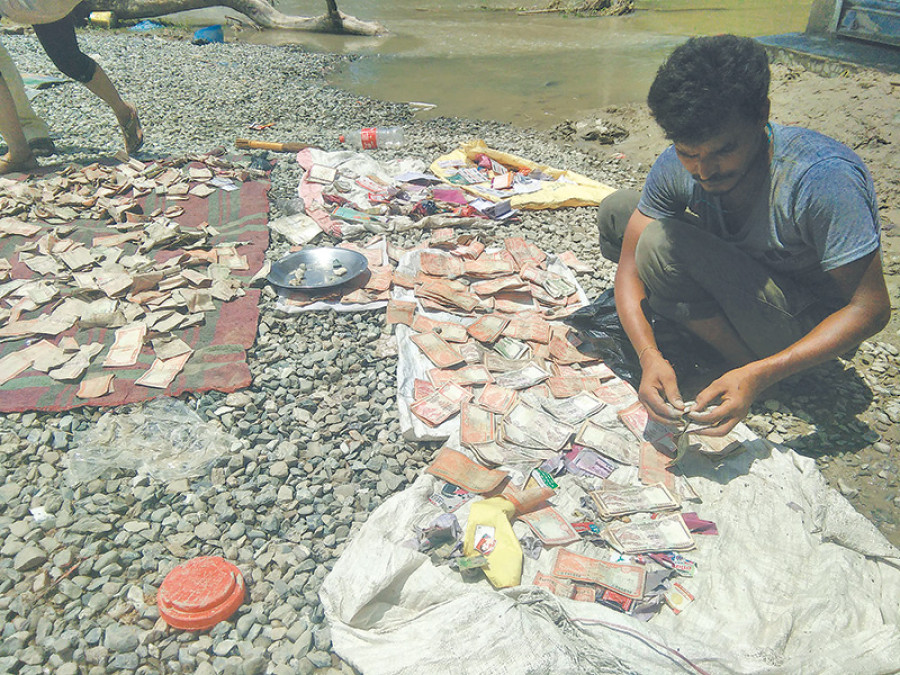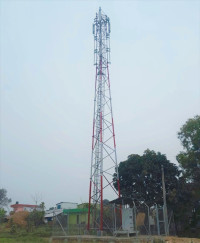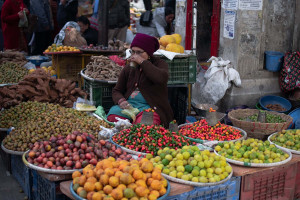Money
Floods shave Rs2.9b off farm sector: Govt
The farm sector is expected to suffer losses to the tune of Rs2.86 billion due to flash flood triggered by heavy rainfall in the Tarai districts since last Thursday, according to preliminary estimates of the Ministry of Agricultural Development.
The farm sector is expected to suffer losses to the tune of Rs2.86 billion due to flash flood triggered by heavy rainfall in the Tarai districts since last Thursday, according to preliminary estimates of the Ministry of Agricultural Development.
The preliminary report prepared by the ministry shows that vegetable and fishery sectors suffered the biggest loss, said Shankar Sapkota, deputy spokesperson of the ministry. “Paddy fields have been filled with flood water. The cost of damage has not been ascertained yet, as the water level in most of the paddy fields has not receded,” he said. “It’s difficult to assess the value of losses at the moment, as most of the farmers in the Tarai region had recently transplanted paddy, while some are yet to transplant it.” According to the ministry, the agricultural sector of the central Tarai region suffered the biggest loss amounting to Rs1.95 billion, followed by the eastern Tarai region (Rs650 million).
Likewise, crop losses in the far-western region and the mid-western region are estimated to hover around Rs91.3 million and Rs154 million, respectively.
The western region saw losses of crops worth Rs5.7 million. The ministry said full crop loss report would be released on Wednesday. Also, the ministry will introduce a relief package on August 23 to help farmers who have lost their crops, said Sapkota.
These losses were reported in the fiscal year when the government was planning to increase paddy output to 5.4 million tonnes from last fiscal year’s 5.2 million tonnes.
A drop in paddy output does not bode well for the economy as it makes a contribution of around 20 percent to the total agricultural output.
The farm sector’s contribution to the country’s gross domestic product (GDP) stood at around Rs691.2 billion in the last fiscal year. This was around 29 percent of the GDP.
So to minimise the loss of paddy output the ministry has suggested that farmers use paddy varieties that can tolerate submergence stress. It said that varieties like Hardinath 1 and 3, Radha 4, Sukhha Dhan 1,2,3,4,5 and 6 can be sowed in paddy fields damaged by floods.
These seeds need to be kept in water for 36 to 48 hours to germinate. After that they can be sowed directly. These climate-smart seeds are available at local seed companies, state-owned National Seed Company and Nepal Agricultural Research Council, the ministry said.
“To protect plants from weeds, farmers need to apply Pendimethalin herbicide within 2-4 days of sowing,” the ministry said. A 50ml Pendimethalin mixed with 15 litres of water can be sprayed on a kattha of land. The ministry said farmers who have transplanted Swarna Sub-1, Sawa Mansuli Sub-1 and Ciherang Sub 1 need not worry as these varieties can tolerate both drought and submergence stress.
The plant has the ability to re-grow even after two weeks of submergence. The ministry said that they currently have a stock of 4 tonnes of Sukhha 3, 6 tonnes of Sukhha 5 paddy varieties at Agriculture Research Station, NARC, Belachapi in Dhanusha. Likewise, National Seed Company has a stock of 235 tonnes of Radha-4 seeds.




 17.12°C Kathmandu
17.12°C Kathmandu














